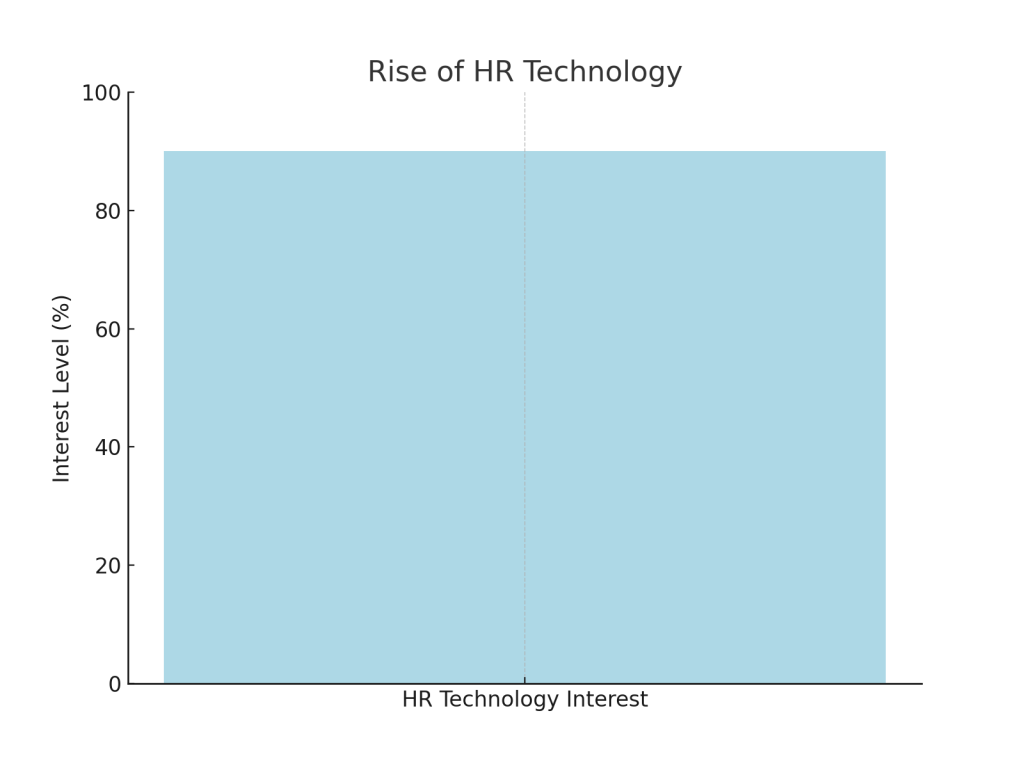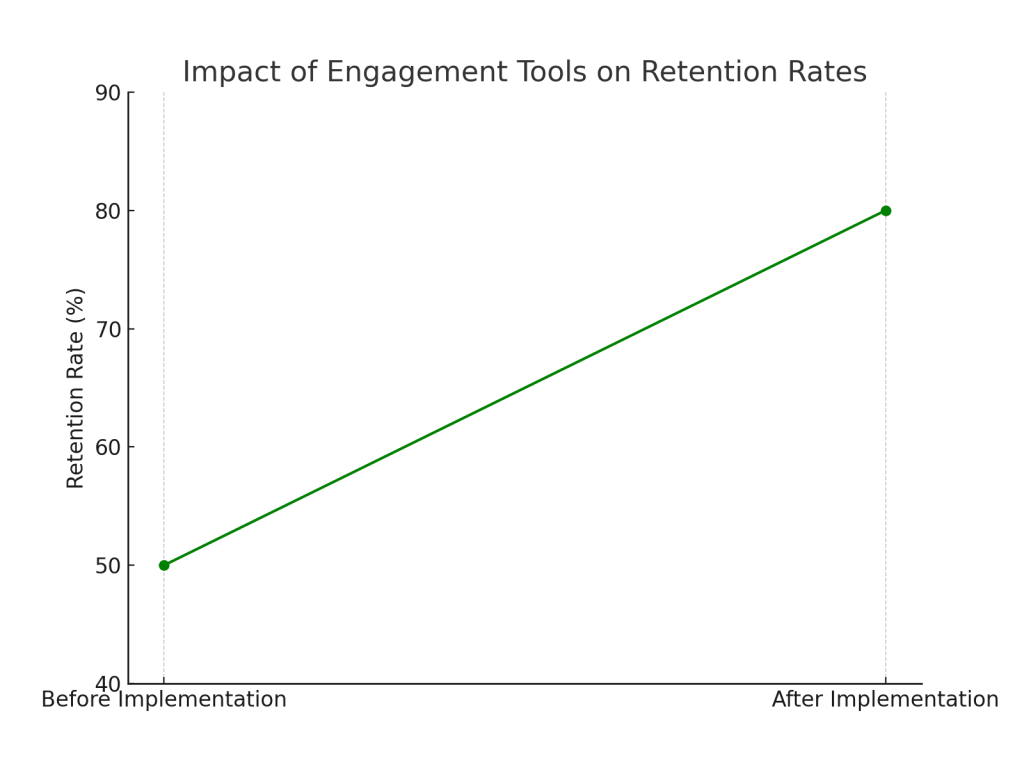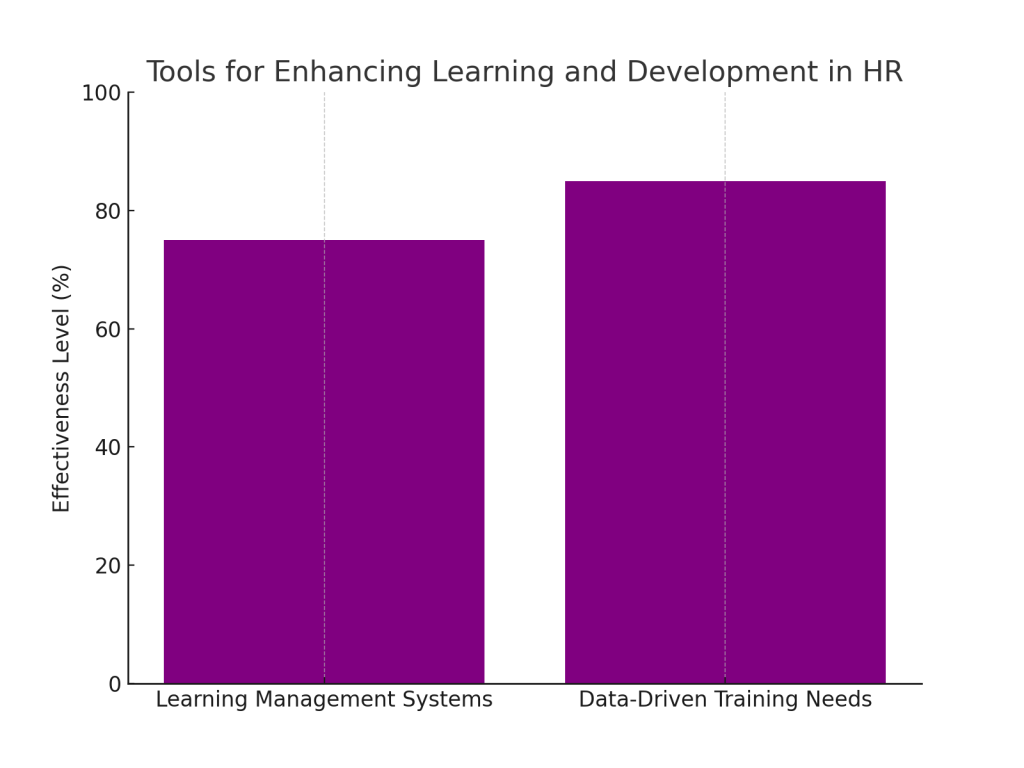In today’s fast-paced business environment, HR departments are increasingly turning to technology and data analytics to enhance decision-making and operational efficiency. This blog explores how HR can effectively utilize these tools to meet organizational objectives and improve employee experiences.
1. The Rise of HR Technology
Insight
Recent developments highlight the growing relevance of HR technology. For instance, the Society for Human Resource Management (SHRM) now offers a weekly newsletter dedicated to the latest advancements in this field. This underscores the shift towards data-driven approaches in HR.
Real-World Example
The NHS’s use of virtual reality (VR) training programs showcases how advanced technology is being adopted in HR to promote inclusion and address specific organizational needs.
Visual Representation
Diagram: The rise of technology in HR departments.

2. Talent Acquisition and Management
Insight
Technology plays a pivotal role in streamlining talent acquisition and management processes.
Key Tools
- Applicant Tracking Systems (ATS): Automate the hiring process by screening resumes and scheduling interviews, making it easier to identify top candidates.
- Performance Management Platforms: Centralize performance data, automate feedback, and track goal progress, enabling better performance oversight.
Challenges and Solutions
While these tools can enhance efficiency, HR must choose platforms that align with their organizational needs. Solution: Conduct a needs assessment to identify the best-fit tools.
Visual Representation
| Talent Acquisition Tools | Benefits |
|---|---|
| Applicant Tracking Systems | Streamlines hiring processes |
| Performance Management Platforms | Centralizes performance data and automates feedback |
3. Employee Engagement and Retention
Insight
Leveraging technology can also enhance employee engagement and retention strategies.
Key Tools
- Pulse Surveys and Feedback Tools: Gather real-time feedback to address issues proactively, improving engagement.
- Data Analytics for Retention: Analyze employee demographics and performance data to predict attrition risks and implement targeted strategies.
Real-World Example
A manufacturing company used data analytics to identify turnover trends among specific demographics, leading to targeted retention efforts that reduced attrition by 20%.
Visual Representation
Chart: The impact of engagement tools on retention rates.

4. Compensation and Benefits
Insight
Compensation and benefits can be optimized using technology to ensure competitiveness and equity.
Key Tools
- Compensation Benchmarking Tools: Analyze market salary data to maintain competitive compensation packages.
- Benefits Administration Platforms: Streamline benefit program administration and automate enrollment processes.
Visual Representation
| Compensation Tools | Purpose |
|---|---|
| Compensation Benchmarking | Ensures competitive pay |
| Benefits Administration Platforms | Automates benefits communication and enrollment |
5. Learning and Development
Insight
Technology can significantly enhance learning and development initiatives.
Key Tools
- Learning Management Systems (LMS): Deliver online training and track employee progress effectively.
- Data-Driven Training Needs Analysis: Identify skill gaps through performance data and feedback.
Real-World Example
A tech startup implemented an LMS to offer targeted training programs, resulting in a 30% increase in employee skills assessment scores.
Visual Representation
Diagram: Tools for enhancing learning and development in HR.

6. Diversity, Equity, and Inclusion (DEI)
Insight
HR can use technology to support DEI initiatives.
Key Tools
- DEI Analytics: Measure effectiveness by analyzing employee demographics and experiences.
- Blind Recruitment Tools: Remove bias from hiring by anonymizing applicant information during initial screenings.
Visual Representation
| DEI Tools | Function |
|---|---|
| DEI Analytics | Measures representation and experiences |
| Blind Recruitment Tools | Promotes unbiased hiring practices |
Conclusion
While technology and data analytics present valuable opportunities for HR, their effectiveness hinges on careful implementation. Organizations must:
- Select tools that align with specific needs.
- Ensure data quality and integrity.
- Prioritize data privacy and comply with regulations.
- Use data insights ethically to support fair decision-making.
Call to Action
Explore the latest trends in HR technology and data analytics by subscribing to this informative newsletter. Stay ahead of the curve and empower your HR department!


